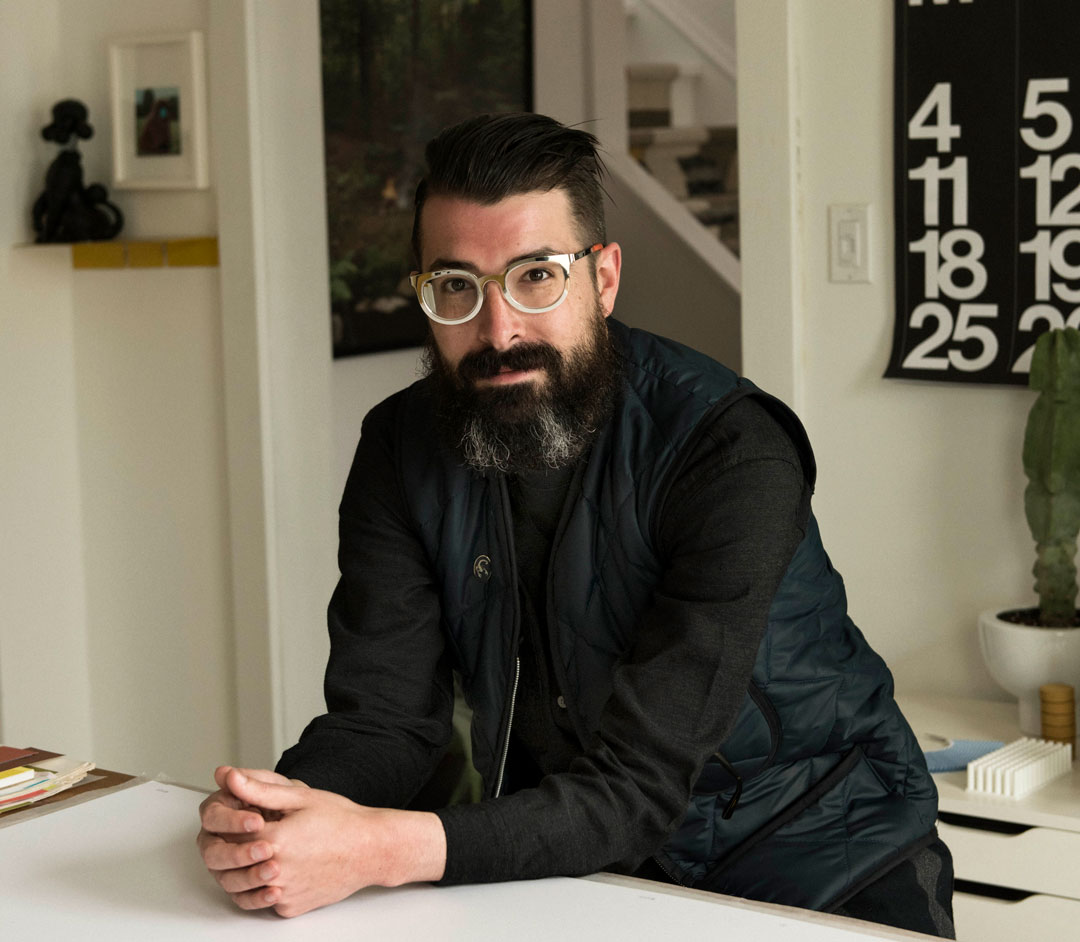Some artwork tends to breathe, feeling like a living thing beyond its subject matter or materials. Stephen Eichhorn has created such a collection of art featuring eclectic texture, vibrancy, and pure fun that the flora he has cobbled onto geometric cut-outs nearly dances of their own volition. We had the pleasure of picking his brain to gain insight into his process of creation and learn how he brings these lovely little paper ecosystems to life.
How would you describe your aesthetic? How has your art evolved over time, whether in theme, subject, style, or execution?
I’ve been told the overarching aesthetic thread in my work is “dark beauty.” I tend to add that there is a cosmic element, present in plants and our relationship to plant matter and imagery, that runs throughout the work.
As I’ve continued to make collage work I have attempted to hone and perfect my handcraft. The collage material itself has changed; At the start of making collages, I was putting together elements in a more traditional college juxtaposition (mixing cut landscapes and individual collage components). Now I let myself go down rabbit holes with the source material – making work composed of all cacti and succulent matter or pieces composed entirely of orchids.
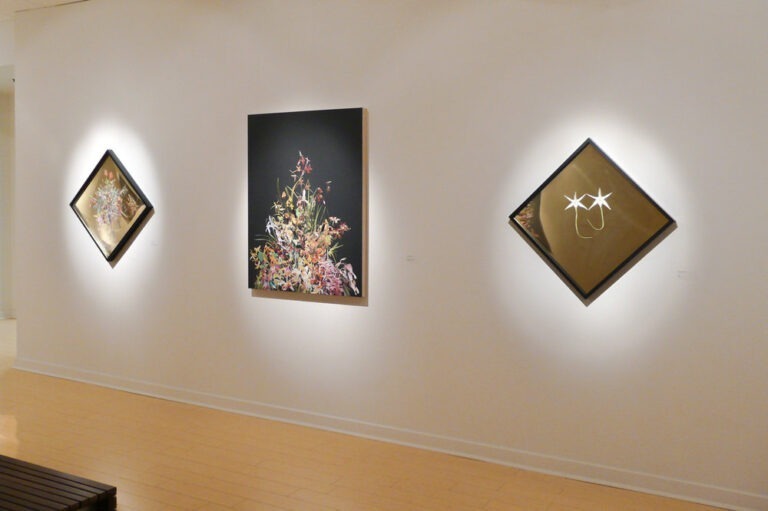
Nighttime Tropicals by Stephen Eichhorn at Franklin Park Conservatory.
In terms of your process, how do you organize yourself?
In the studio, I have daily rituals and tasks that I am in the process of shifting post-solo show. I’m really excited about the re-set after a large solo project, even if it’s a brief pause. Most of my day-to-day is cutting and gathering material for the collage work. Actual “making,” being more sporadic and at the moment, is a type of “when it’s time, it’s time” approach.
Where or how do you source your collage components?
Collage components are sourced from historical botany textbooks and plant publications. There are some studio rules about the collage material: no National Geographic, Life Magazine, or material ubiquitous to collage craft.
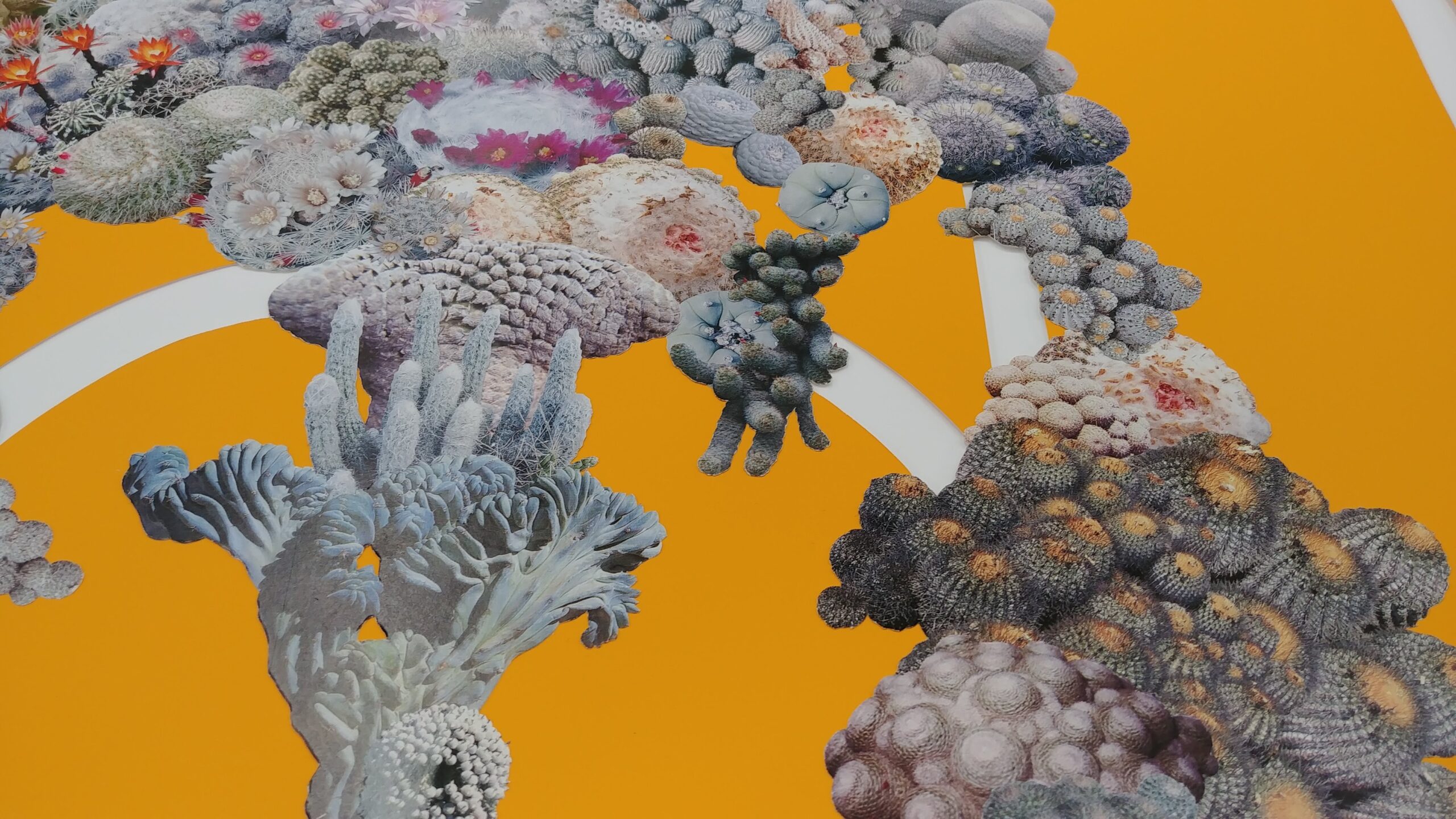
What tools do you use to make your collages?
I use one knife for all the component prep – an Olfa Ltd-09 Japanese X-Acto – it is a heavier steel knife that is perfect for the long hours of cutting and has better handling than the lighter, disposable feeling X-Actos. In the studio, we use Gudy, an archival dry adhesive, for all collage pieces. It is primarily used in bookbinding and framing but works perfectly for the detailed pieces in my collages. In terms of paper, I have been using deadstock Pantone Letraset paper and just started using Color-aid paper. I love how saturated and desaturated the colors are in both. The upcoming solo with Carrie Secrist Gallery uses both paper stocks in a variety of sizes.
Do you have a specific material or thematic focus to your artwork and if so what would you describe that as?
Since starting to explore collage, nearly ten years ago, I’ve been working on and slowly expanding my use of natural and organic shapes. I was initially drawn to the imagery out of its form and structure. Using found imagery and tracking down different collage components has led to other work. I came across orchids (that I’ve used in my studio practice) through hunting for floral imagery. The process, honing and further conceptualization of the collage work has been sustained and driven by the components.
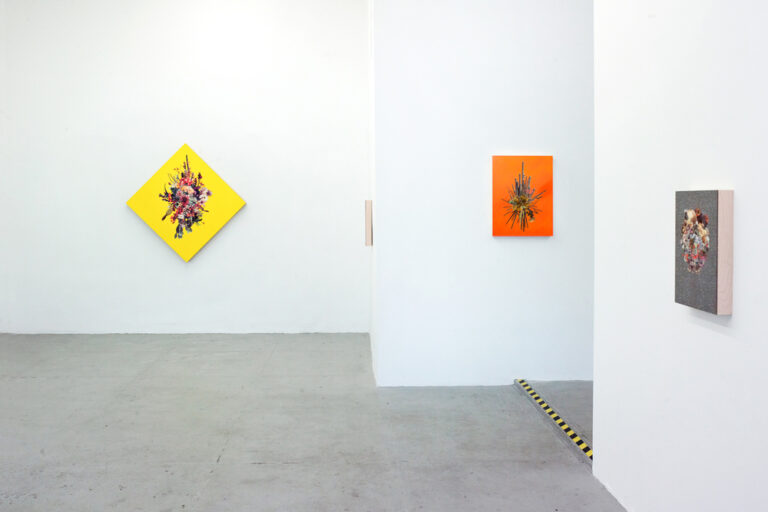
Arrangements by Stephen Eichhorn at CES Gallery
What drew you toward becoming an artist? What kept you going?
I became interested in becoming an artist (as a career) around the age of five or six. Starting about once every other month, I would go to the Cincinnati opera with my grandmother. I had a small sketchbook and drew all the scenes throughout. That was really the true start to my focus on art, paying attention to detail, and patience in the craft.
How did you come to work with us?
Over ten years ago, another working artist referred me to Seaberg when I was first starting to frameworks professionally. Since then, Seaberg has provided framing components for in-studio framing to mounting and framing larger scale projects for shows.
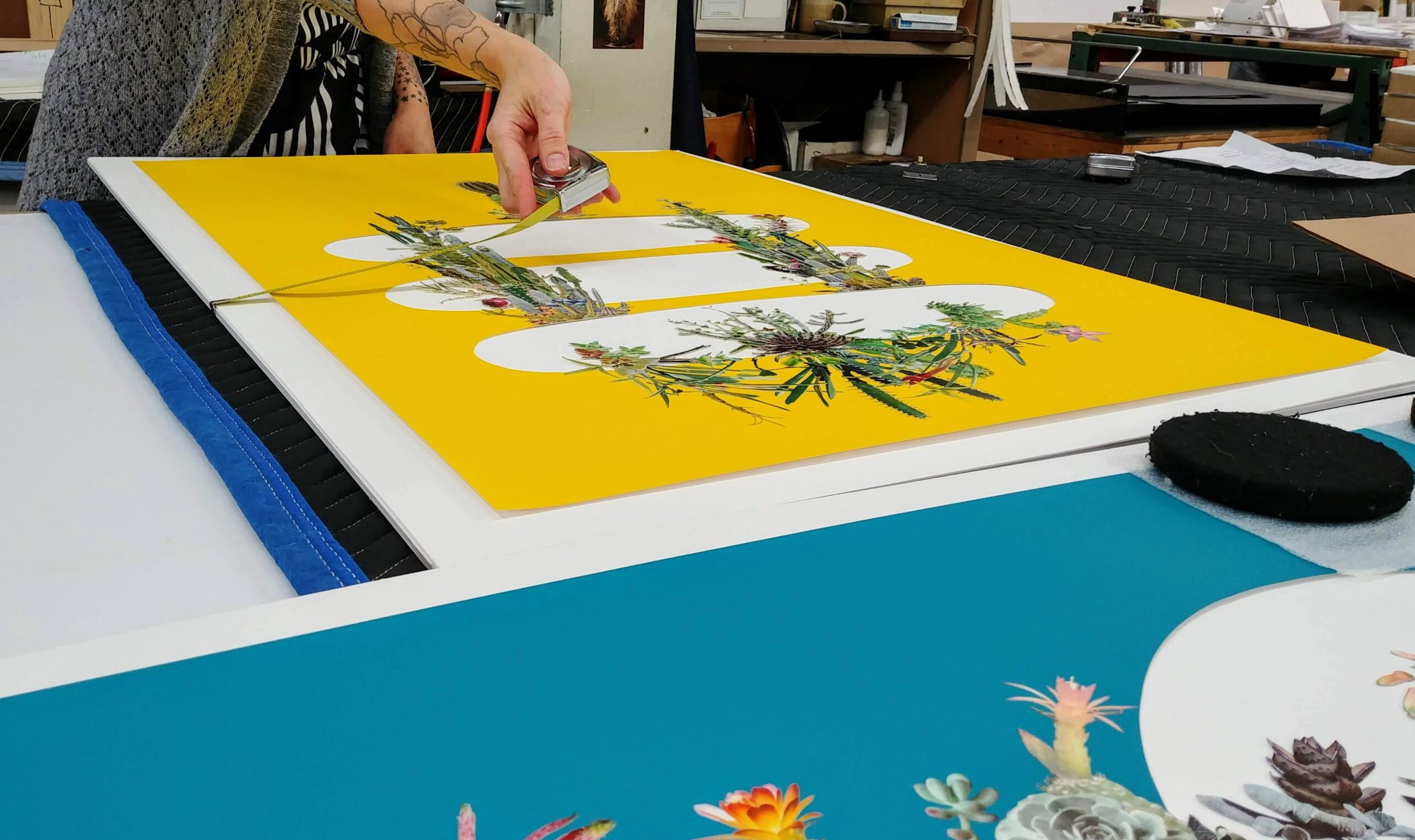
What did we first collaborate on with you?
Seaberg worked with me on framing a small solo project that immediately led to framing a large 7’ x 4’ piece. Taking on such a physically large piece was daunting and being able to utilize the Seaberg staff’s knowledge and skill was amazing.
Have there been any unique projects since that were framed and mounted with the assistance of Seaberg?
Various Fades at Johalla Projects was the first time I used the laminating and mounting services along with framing. The gradient background on the works in that project was all screen-printed on synthetic PVC paper that needed mounting before I could start collaging. It was my first venture into something other than collage on paper or panel.
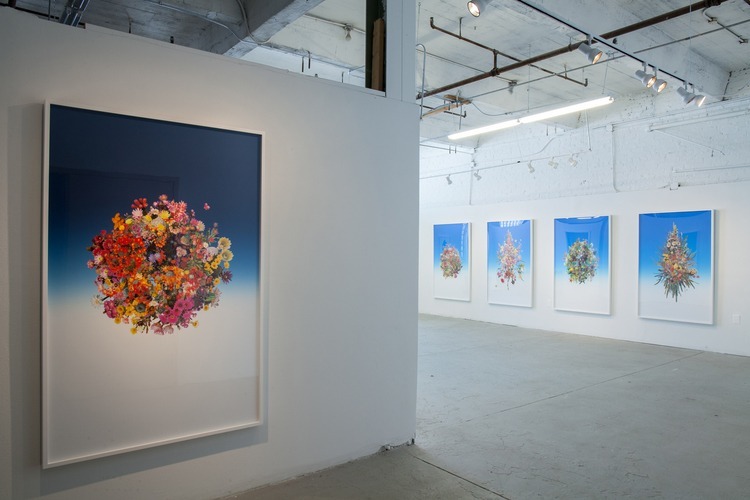
Various Fades by Stephen Eichhorn at Johalla Projects.
What do you have going on right now?
I have a solo show, Ceaseless Wheel, with Carrie Secrist Gallery opening on November 10th. We are also putting together a special book signing for the release of the 2nd edition release of Cats & Plants (Zioxla). You can have your book signed on December 15th at 1 PM and stick around for an additional talk with me at Carrie Secrist Gallery.
Why plants and cats? Can you tell me more about the inspiration behind your book?
The Cats & Plants series started as a joke. Cats are bizarre, magical creatures. I made the first ones in between making my floral works with imagery coming from a collection of growing cat books in the studio. I kept finding them while looking for other source material. One summer there was a critical mass of imagery and I couldn’t let them sit anymore. I don’t really think of the cut pieces when I’m making other work, but they were a stepping stone in the studio in terms of a transition into making the cactus cluster works and fades. Before that, I was working on white or black-backed work and the cats loosened up my practice. They were born out of my love for the cat imagery and visceral response to the portraits of these animals. For at least a minute, it makes people laugh and serves as a way to visually and mentally escape.
What is your favorite piece you’ve created? Why?
The Dreaming was the piece that started to bring the upcoming show together. It was that “turning point” piece in putting together the Ceaseless Wheel that created clarity in what that show was going to be and visually be about. In making it I got into that perfect studio flow, where intuitive and calculated moves were in synch.
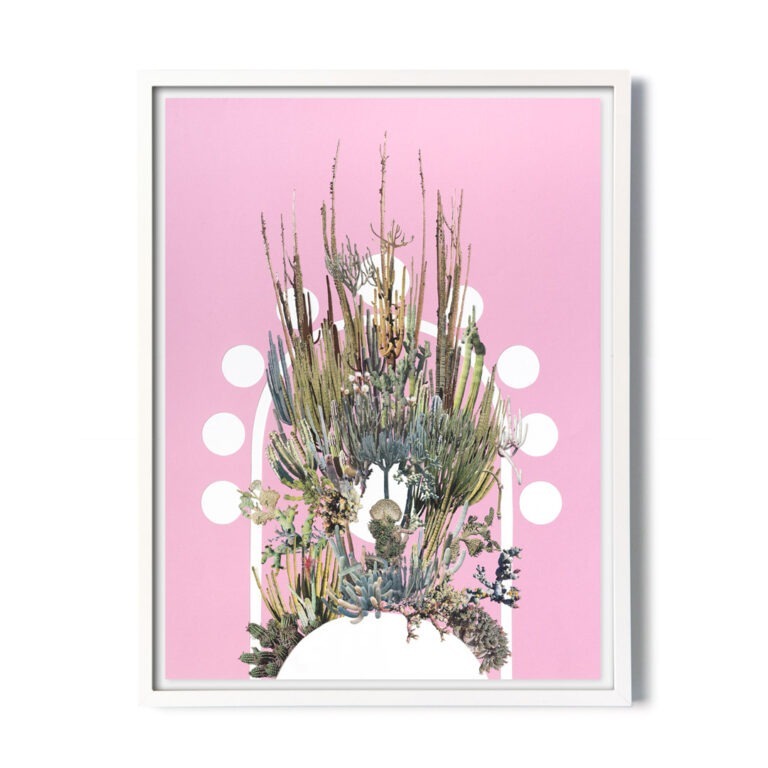
The Dreaming, 2018. By Stephen Eichhorn. Collage on archival paper.
What do you have planned next?
There are some home and studio improvement projects I’m excited to get to work on. Expanding my studio and continuing to grow is a forever goal.
Do you have any advice for aspiring artists?
Letting yourself learn from failures and mistakes is key for growth as an artist (and as a human). I think about this advice from Tom Sachs quite a bit, “Love and accept yourself for who you are. Develop your intuition so you can have the courage to make just the right ‘wrong’ decision.”
Keep up with Stephen on Instagram and see more of his work online.

